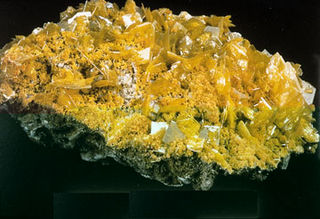Tetragonal_crystal_system
Tetragonal crystal system
Lattice point group
In crystallography, the tetragonal crystal system is one of the 7 crystal systems. Tetragonal crystal lattices result from stretching a cubic lattice along one of its lattice vectors, so that the cube becomes a rectangular prism with a square base (a by a) and height (c, which is different from a).
This article needs additional citations for verification. (July 2011) |



